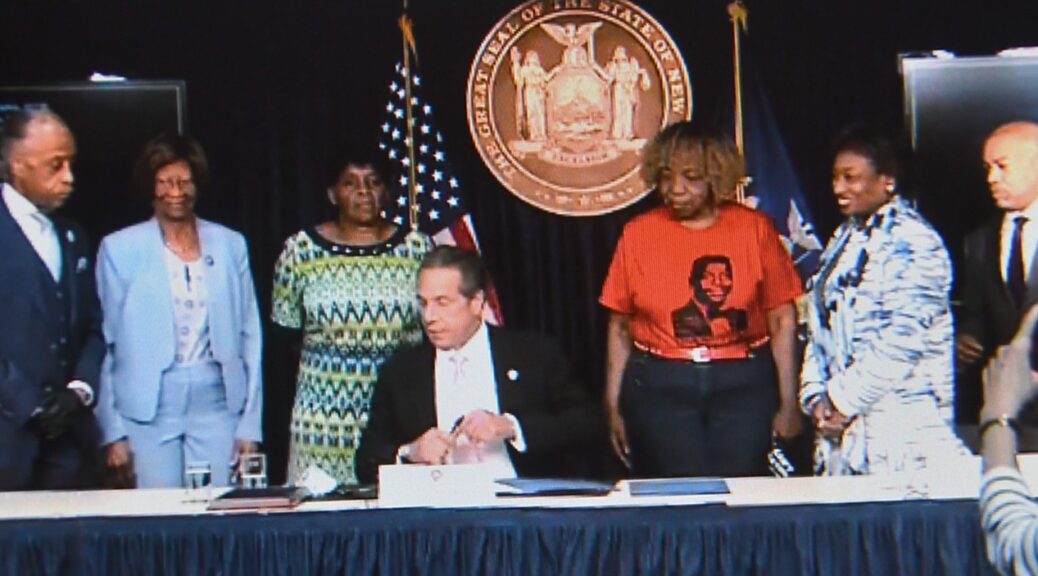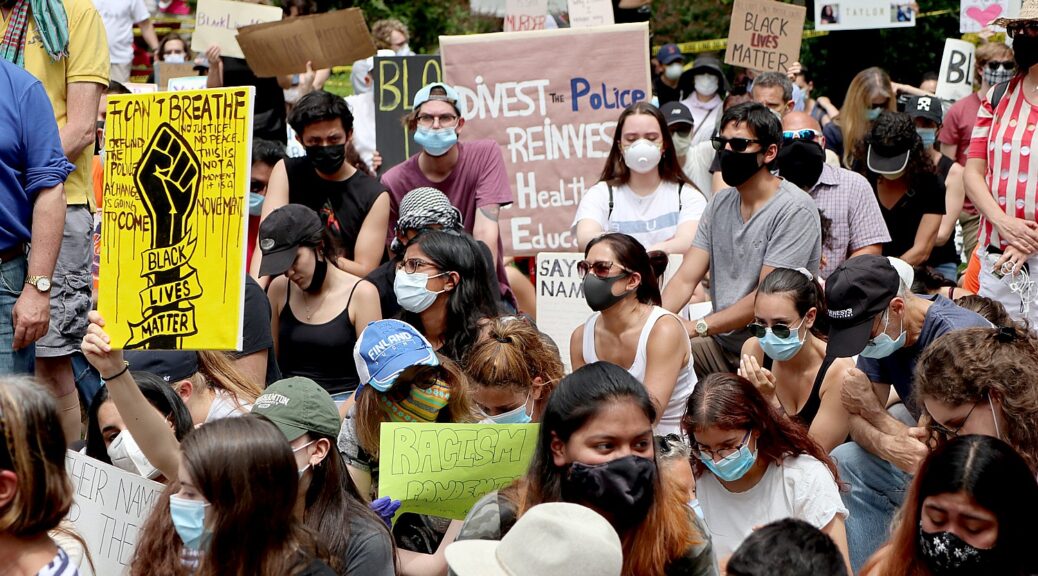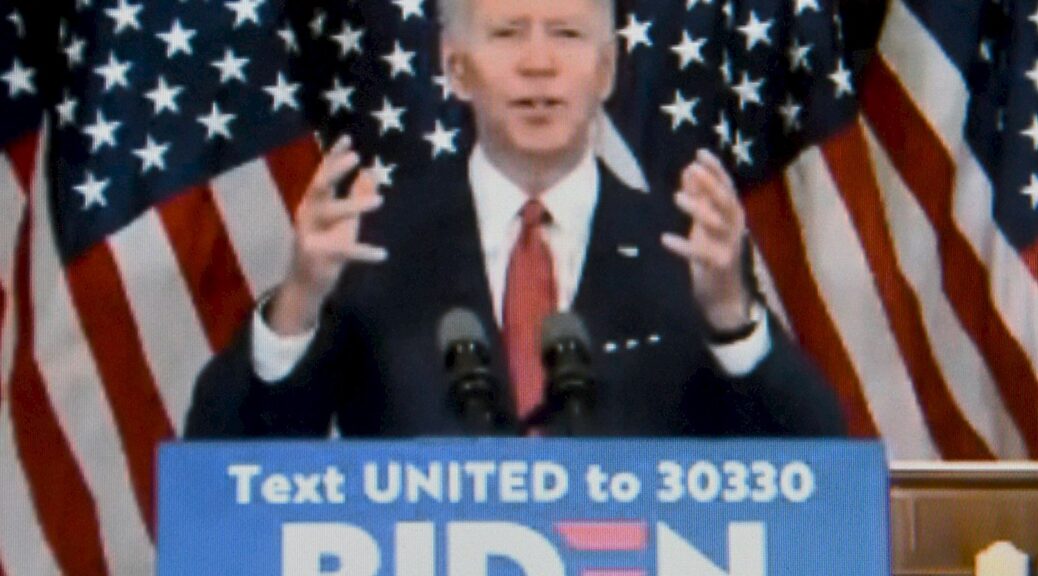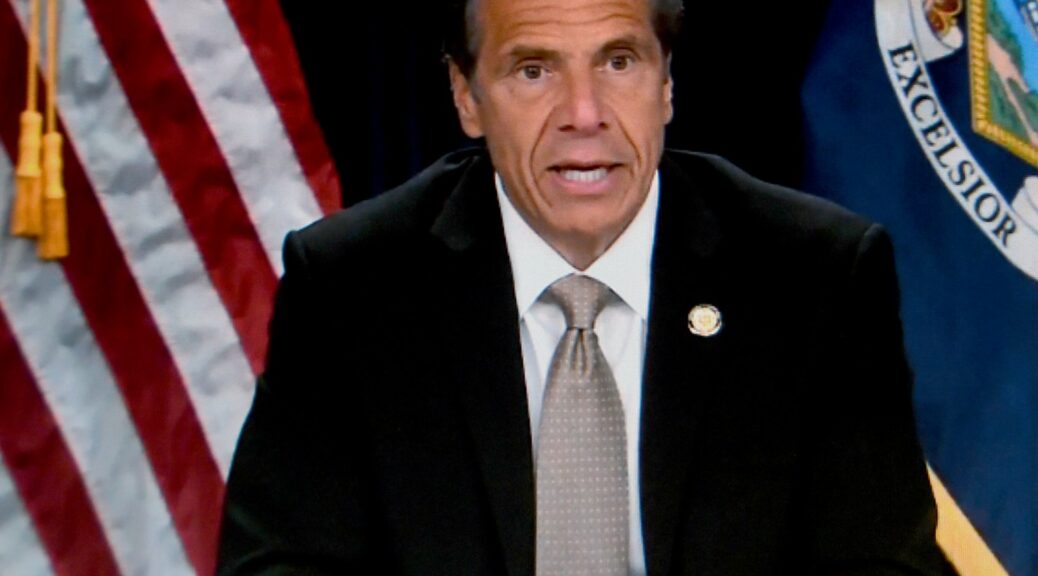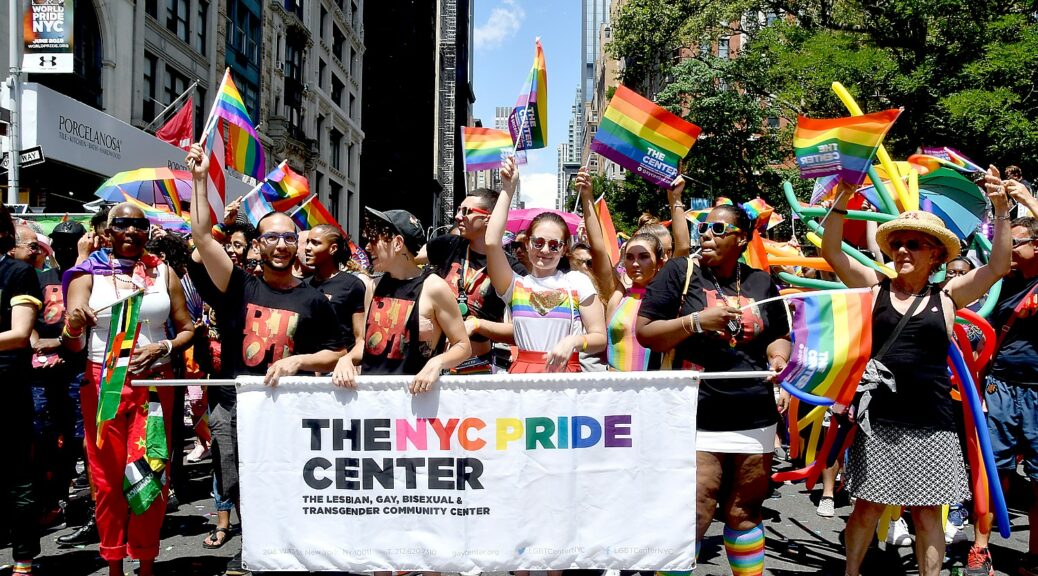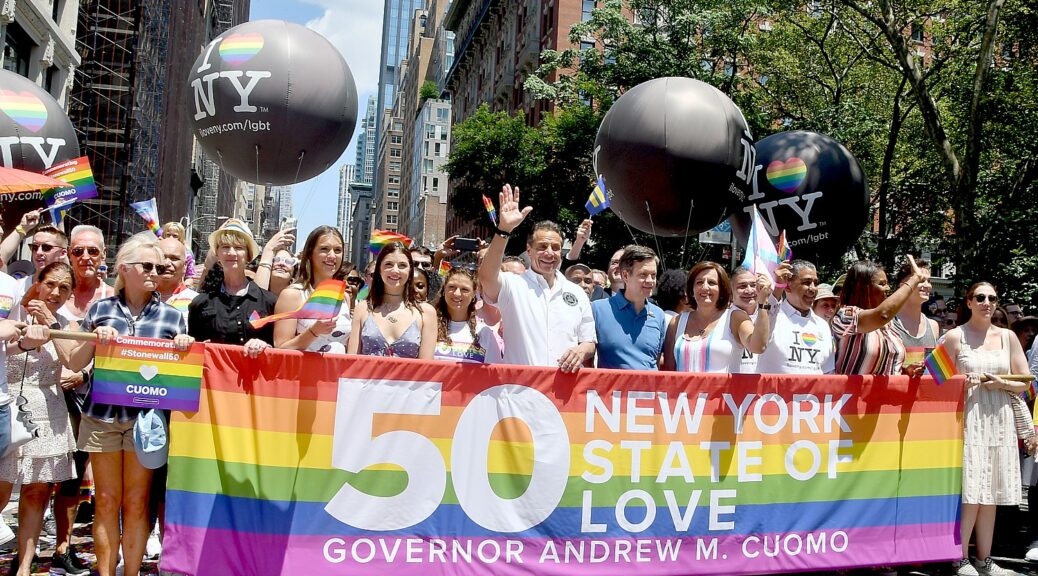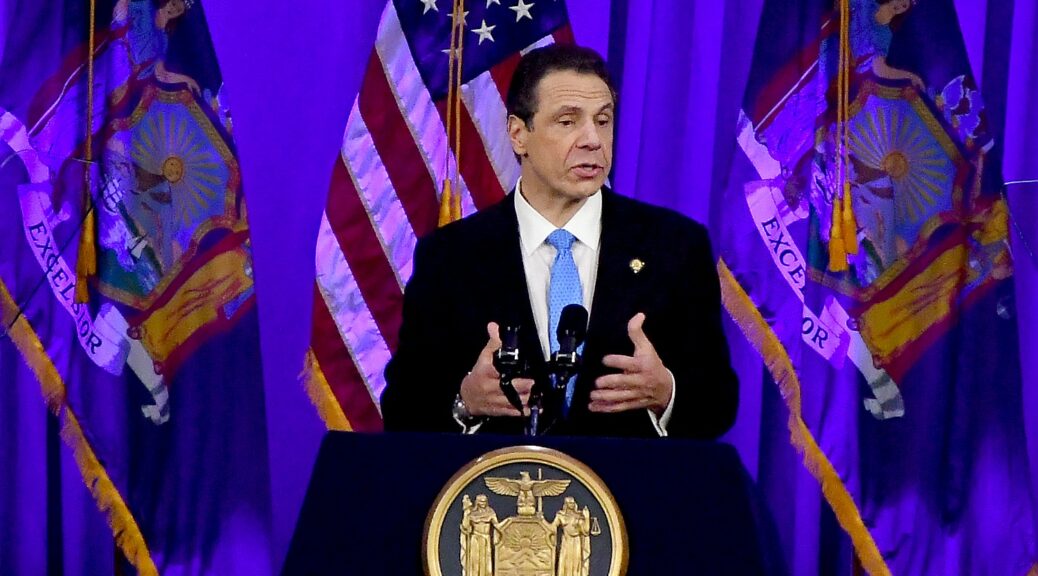
In the midst of economic, unemployment, and climate crises, Vice President Joe Biden, the presumptive Democratic candidate for president, rolled out the second plank of his Build Back Better economic recovery plan for working families: building a modern, sustainable infrastructure and an equitable clean energy future. In a sharp contrast to Donald Trump’s disregard for working Americans and the consequential climate emergency at hand, Vice President Biden’s plan will create millions of good paying, union jobs for Americans while building sustainable infrastructure and creating an equitable clean energy future.
Here’s what leaders from across the country are saying about Vice President Biden’s plans:
“The plan put forward today by former Vice President Biden will create and sustain the kinds of good-paying, union jobs that provide a ladder to the middle class and make America a leader in manufacturing clean technology, put our nation on a path to doing our part to tackle the climate crisis, rebuild America’s crumbling infrastructure, and lift up all workers and communities by prioritizing investments in communities of color that have borne the brunt of environmental injustice,” Jason Walsh, the Executive Director BlueGreen Alliance, said in a statement.
“As president of the IBEW, the largest union of electrical workers in the nation, I’m pleased that it will create so many jobs in nearly every sector of the workforce we represent, including construction, utility, telecommunications, manufacturing, and railroad. Joe Biden has made it clear that any new federal investments must support American jobs and American made products,” Lonnie R. Stephenson, president of the International Brotherhood of Electrical Workers (IBEW), said in a statement. “These are vital jobs that our nation needs more than ever… The men and women of the IBEW have been part of American’s clean-energy revolution for years now. We look forward to working with a Biden administration in building a clean and sustainable economy that can both save our planet and help rebuild the American middle class.”
“This ambitious plan is a win-win for American manufacturing, auto industry jobs, new technology and a cleaner environment. By focusing on investments in new technology, increasing demand for American-made and sourced clean vehicles; investing in our plants and our auto manufacturing facilities and creating 1 million new jobs, this all-American plan will ensure that the industry will thrive for decades to come with good paying union jobs,” the United Auto Workers (UAW) said in a statement. “This comprehensive plan will also increase investment in batteries and charging infrastructure and set fuel economy standards that involve all stakeholders. And this plan will save consumers money and cut air pollution. UAW members are looking to Washington, D.C. to invest in future jobs; new technologies; a world race to cleaner air; and to save consumers their hard-earned money. This plan checks all those boxes.”
“Joe Biden’s climate plan—by a long shot—is the most ambitious we have ever seen from any president in our nation’s history,” Gina McCarthy, president and CEO of the NRDC Action Fund, said in a statement. “It will get our economy humming again, and give our children a healthier, more just and more hopeful future. And he has committed to getting started on day one.”
“Vice President Joe Biden’s ambitious new commitments to a clean energy economy, environmental justice, and equitable climate solutions are more important than ever as our nation grapples with the realities of systemic racism, a global pandemic, and the ever growing climate crisis. Biden’s strong climate leadership stands in stark contrast with the Trump administration, which is continuing this week with its full scale assault on environmental and public health protections,” Tiernan Sittenfeld, Senior Vice President of Government Affairs of LCV Action Fund, wrote in a statement. “We applaud Vice President Biden for again making clear with these plans that combatting the climate crisis, fighting for environmental justice and creating millions of good-paying, high-quality jobs in a clean energy economy will be a very top priority on day one as president and every single day.”
“Vice President Biden is right ‘that environmental policy decisions of the past have failed communities of color,’ and his emphasis on addressing those injustices is a critical part of this plan. For too long Black, Latino, as well as low-income neighborhoods have suffered far more than their fair share of pollution and other environmental impacts, with devastating results on the health of the people living there,” said Elizabeth Gore, Senior Vice President, Political Affairs, EDF Action Fund in a statement. “The Biden Plan couldn’t be more of a stark contrast to four years of failure by the Trump administration. They have weakened limits on climate pollution, undermined scientists, and surrendered international leadership. America can’t afford another four years of a president who claims climate change is a hoax instead of providing leadership. We look forward to working with the Congress and a new administration to finally take real action on climate change.”
“While Donald Trump spreads lies about windmills, tries to block legislative efforts to advance electric vehicles, and ignores the millions of Americans working in clean energy, Joe Biden is presenting a vision to invest in and grow an equitable clean energy economy,” Sierra Club Political Director Ariel Hayes said in a statement. “The Sierra Club is encouraged by Biden’s proposal, which shows he is listening to the continued calls from activists and organizations across the country demanding a bold and ambitious plan that meets the size and scale of the crisis and completes the transition to a clean energy economy.”
“Today I heard from many in the environmental justice movement across the country who were overwhelmed by the Historic Ambitious speech addressing environmental, climate, social, and economic injustice by the Vice President,” said former South Carolina State Representative Harold Mitchell and Founder of The ReGenesis Project. “We thank you for listening, and announcing one of the boldest climate and environmental justice plans ever presented by a nominee for President.”
“Joe Biden shares DSCEJ’s commitment to build the power of Black communities, harmed by toxic pollution and vulnerable to the climate crisis, to shape the national agenda for achieving environmental justice and climate justice,” said Beverly L. Wright, Ph.D., Executive Director, Deep South Center for Environmental Justice.
“The Biden Environmental Justice Plan is the most targeted and comprehensive plan to address the legacy of environmental racism and the continuing ambivalence regarding environmental quality in communities of color that has been proposed by a potential presidential nominee,” said Peggy Shepard, co-founder and executive director of WE ACT for Environmental Justice based in Harlem, New York,” said Peggy M. Shepard, Executive Director, WE ACT for Environmental Justice. “When I was chair of the National Environmental Justice Advisory Council to the EPA I witnessed the total disregard of Title 6 administrative complaints by the EPA’s Civil Rights division, and the lack of accountability or reporting on environmental justice progress by the EJ Interagency Council which was mandated to develop plans to address environmental degradation in EJ communities. The Biden plans’ initiative to mandate a report card on progress to the White House is another important proposal to establish accountability which has been absent.”
“It’s encouraging to see former Vice President Biden release an environment, climate , economic and energy plan that places justice and health at the center,” said Dr. Robert. D. Bullard, Distinguished Professor of Urban Planning and Environmental Policy, Texas Southern University, widely regarded as the father of the environmental justice movement. “Given the converging and multiple threats faced by low-income, people of color, and vulnerable communities today, I like the fact the plan calls for an inclusive and All-of-Government approach in setting policy and legislative priorities and a framework for targeting resources to address underlying systemic conditions that create and perpetuate racial and economic inequality and unequal protection.”
“This is a truly historic moment in Presidential candidate history. Environmental Justice elders are being heard and together we can, and we will forge a new pathway for this country to live up to its ideals of justice for all!” said Dr. Cecilia Martinez, Executive Director, Center for Earth, Energy & Democracy; Inaugural Signer of the Equitable and Just National Climate Platform; and Co-Chair, Biden for President Climate Engagement Advisory Council.
“We strongly applaud the Biden campaign for taking an ambitious, comprehensive approach to climate change policy that recognizes the renewable energy industry’s ability to grow America’s economy towards a cleaner environment and a more prosperous and equitable future,” said Tom Kiernan, CEO of the American Wind Energy Association in a statement. “As our country strives to recover from the global pandemic, racial injustices, and economic recession, this is the right moment to grow the investments and good-paying American jobs associated with renewable energy development, including the significant economic benefits, lower cost electricity bills, and diverse community support that wind energy brings to rural parts of the country.”
“I think this plan out of Joe Biden is really visionary. It’s about investing in the technologies of the future and it certainly does deploy a lot of the work that the big three are already doing here in Detroit — and expands upon that and builds that out even further,” Michigan Governor Gretchen Whitmer said. “Autonomous vehicles, vehicles of the future, electric vehicles — these are the industries we’ve got to make investments in, that we’ve got to grow, and that will make our environment cleaner and be a much longer-term type of investment for the people of this country. I was excited to hear Joe Biden’s plan today.”
”This is exactly the bold vision for the future that we need in our country,” said Michigan Senator Debbie Stabenow. “What I love about what Joe Biden is proposing is that it’s about making it here, it’s about using it here, it’s about tackling the climate crisis in a way that creates new, clean energy jobs and does it in a way that provides opportunity for everyone and addresses parts of our communities that have been hardest hit by that pollution and the inequalities involved. “
“I’ve spent my time in public service fighting for environmental justice and for workers‘ rights so people who work hard can forge a better life for themselves. I know these two issues go hand in hand. So does my friend, Joe Biden. His clean energy jobs plan, with a strong environmental justice focus, proves it,” said Los Angeles County Supervisor and former U.S. Secretary of Labor Hilda Solis.
“VP Biden has chosen a bold path to get America to energy and environmental security and confront the existential challenge of climate change with bold and realistic solutions,” said former Senator and former U.S. Secretary of the Interior Ken Salazar.
Here is the plan:
The Biden Plan to Secure Environmental Justice and Equitable Economic Opportunity in a Clean Energy Future
The current COVID-19 pandemic reminds us how profoundly the energy and environmental policy decisions of the past have failed communities of color – allowing systemic shocks, persistent stressors, and pandemics to disproportionately impact communities of color and low-income communities.
Joe Biden is running for President to ensure that all Americans have a fair shot at getting ahead. That means rooting out the systemic racism in our laws, policies, institutions, and hearts. Any sound energy and environmental policy must advance public health and economic opportunity for all Americans, in rural, urban, and suburban communities, and recognize that communities of color and low-income communities have faced disproportionate harm from climate change and environmental contaminants for decades. It must also hold corporate polluters responsible for rampant pollution that creates the types of underlying conditions that are contributing to the disproportionate rates of illness, hospitalization, and death from COVID-19 among Black, Latino, and Native Americans. That means officials setting policy must be accountable to the people and communities they serve, not to polluters and corporations.
Addressing environmental and climate justice is a core tenet of Biden’s climate plan. Biden will:
Use an inclusive and empowering All-of-Government approach;
Make decisions that are driven by data and science;
Target resources in a way that is consistent with prioritization of environmental and climate justice; and
Assess and address risks to communities from the next public health emergency.
USE AN INCLUSIVE AND EMPOWERING, ALL-OF-GOVERNMENT APPROACH
Our nation’s environmental justice policy was developed more than twenty years ago and no longer addresses the needs of the present or future. In order to clean up our communities and provide new opportunities to those that have been disproportionately burdened by pollution and economic and racial inequality, Biden will revise and reinvigorate the 1994 Executive Order 12898 (EO 12898) on Federal Actions to Address Environmental Justice in Minority Populations and Low-Income Populations. Specifically, Biden will:
Establish an Environmental and Climate Justice Division within the U.S. Department of Justice. Under the Trump Administration, the U.S. Environmental Protection Agency (EPA) has referred the fewest number of criminal anti-pollution cases to the Justice Department (DOJ) in 30 years. Allowing corporations to continue to pollute – affecting the health and safety of both their workers and surrounding communities – without consequences, perpetuates an egregious abuse of power. Biden will direct his EPA and DOJ to pursue these cases to the fullest extent permitted by law and, when needed, seek additional legislation to hold corporate executives personally accountable – including jail time where merited. Going beyond the ambitious proposals that the Biden plan for a clean energy revolution already includes, the Biden Administration will establish a new Environmental and Climate Justice Division within the DOJ, as proposed by Governor Inslee, to complement the work of the Environment and Natural Resources Division. In line with the new Division’s mandate, Biden will instruct the Attorney General to: (i) implement, to the extent possible by executive action, Senator Booker’s Environmental Justice Act of 2019; (ii) increase enforcement, in line with the commitments already detailed in the Biden Plan; (iii) strategically support ongoing plaintiff-driven climate litigation against polluters; (iv) address legacy pollution that includes real remedies to make communities safe, healthy, and whole; and (v) work hand-in-hand with EPA’s Office of Civil Rights.
Elevate environmental justice in the federal government and modernize the all-of-government approach. Currently, the federal government has two key environmental justice groups. Biden will elevate and reestablish the groups as the White House Environmental Justice Advisory Council and White House Environmental Justice Interagency Council, both reporting directly to the Chair of the White House Council on Environmental Quality (CEQ), who reports directly to the President. To support this work, Biden’s CEQ will also have senior and dedicated environmental justice staff. These two councils will be charged with revising EO 12898 in order to address current and historic environmental injustice, in collaboration with local environmental justice leaders. And, they will be tasked with developing clear performance metrics to ensure accountability in the implementation of the Executive Order. Once the revised EO is finalized, the White House Environmental Justice Advisory Council and White House Environmental Justice Interagency Council will publish an annual public performance score-card on its implementation.
Overhaul the EPA External Civil Rights Compliance Office. For too long, the EPA External Civil Rights Compliance Office has ignored its requirements under Title VI of the 1964 Civil Rights Act. That will end in the Biden Administration. Biden will overhaul that office and ensure that it brings justice to frontline communities that experience the worst impacts of climate change and fenceline communities that are located adjacent to pollution sources, beginning with the following actions: (i) revisit and rescind EPA’s decision in Select Steel and its Angelita C. settlement, which allowed state environmental agencies to issue dangerous permits, and to conduct its business in a way that harmed communities; (ii) conduct a rulemaking and open a public comment process to seek Americans’ input on agency guidance for investigating Title VI Administrative complaints; and (iii) work with Congress to empower communities to bring these cases themselves, by reinstituting a private right of action to sue Title VI, which was written out in the Supreme Court’s 2001 decision in Alexander v. Sandoval.
MAKE DECISIONS DRIVEN BY DATA AND SCIENCE
President Trump denies science and disempowers experts in the federal government. Biden will choose science over fiction, ensuring we make data-driven decisions when it comes to environmental justice.
Building on EPA’s EJSCREEN tool, developed in the Obama-Biden Administration, and lessons learned at the state level, Biden will charge the newly elevated White House Environmental Justice Interagency Council, in close consultation with the White House Environmental Justice Advisory Council, to create a data-driven Climate and Economic Justice Screening Tool to identify communities threatened by the cumulative impacts of the multiple stresses of climate change, economic and racial inequality, and multi-source environmental pollution. To ensure that information is accessible and transparent, the Screening Tool will be used to publish annual maps in multiple languages that identify disadvantaged communities; including disproportionately burdened tribal areas. In addition, since too often low-income and communities of color lack air quality monitors and are, as a result, unaware of unsafe pollution levels that threaten their health, Biden will:
Mandate new monitoring in frontline and fenceline communities. Biden will ensure that the federal government recommends that each state adequately monitors environmental pollution, including emissions, criteria pollutants, and toxics, in frontline and fenceline communities. This will include installing new monitors where they are lacking to provide accurate and publically-available real-time data. Biden will also create a new environmental public health corps that boosts communities’ capacity to use this data meaningfully.
Require community notification. In line with Congresswoman Blunt Rochester’s Alerting Localities of Environmental Risks and Threats (ALERT) Act, Biden will direct the EPA to create a community notification program requiring “industries producing hazardous and toxic chemicals to engage directly with the community where they are located to ensure residents have real-time knowledge of any toxic release and ensure that communities are engaged in the subsequent remediation plan.”
Establish interagency teams to address targeted issues and partner directly with communities. Biden will also establish an Interagency Climate Equity Task Force to directly work to resolve the most challenging and persistent existing pockets of climate inequity in frontline vulnerable communities and tribal nations. This work includes addressing the challenge of lack of access to credit and capital for many local governments and small businesses owned by and located in environmental justice communities. Biden will rely on the leadership of these communities to identify what they need most. The Biden Administration will let community leaders lead by investing in community self-determination, marshalling federal resources to support local leaders and organizations, and directly funding capacity building — from critical tools to talent — to arm the creativity of local leaders and help them build back better.
Biden will also:
Tackle water pollution in a science-based manner. Biden will focus on improving water quality in a comprehensive way. For example, it is estimated that up to 110 million American’s drinking water could be contaminated with PFAS (per- and polyfluoroalkyl substances), a suite of chemicals that cause a host of health issues, including cancer, and are found in states from Michigan and Wisconsin to Colorado and New Hampshire. Instead of making empty promises with no follow-through, Biden will tackle PFAS pollution by designating PFAS as a hazardous substance, setting enforceable limits for PFAS in the Safe Drinking Water Act, prioritizing substitutes through procurement, and accelerating toxicity studies and research on PFAS. In addition, Biden will accelerate the process to test for and address the presence of lead in drinking water and housing, in line with the CDC’s determination and in partnership with labor, and state, local, and tribal governments. Biden will also help protect rural communities from water and air pollution and make water bills affordable for low-income communities, rural Americans, and tribes through targeted state revolving funds and Rural Utility Service funding for disadvantaged communities.
Prioritize strategies and technologies that reduce traditional air pollution in disadvantaged communities. Biden will direct his Cabinet to prioritize the climate strategies and technologies that most improve public health. He will also direct his Office of Science and Technology Policy to publish a report within 100 days identifying the climate strategies and technologies that will result in the most air and water quality improvements and update analytical tools to ensure that they accurately account for health risk and benefits. Finally, Biden will recommend that every state prioritize emission reductions within the disadvantaged communities identified by the Climate and Economic Justice Screening Tool in their state-level air quality plans.
TARGET RESOURCES CONSISTENT WITH THE PRIORITY THAT ENVIRONMENTAL AND CLIMATE JUSTICE REPRESENTS
The Biden plan already commits to providing low-income and communities of color preference in competitive grant programs. Today, Biden commits to go even further and target 40% of his historic investment in a clean energy revolution to disadvantaged communities. Building on the ambitious New York State climate law, Biden will:
Target relevant investments with the goal of delivering 40% of the overall benefits from those investments to disadvantaged communities, specifically:
Targeting investments made through programs related to clean energy and energy efficiency deployment; clean transit and transportation; affordable and sustainable housing; training and workforce development; remediation and reduction of legacy pollution; and development of critical clean water infrastructure; and
Utilizing the results of the Climate and Economic Justice Screening Tool to help identify these disadvantaged communities, which are threatened by the cumulative impacts of the multiple stresses of climate change, economic and racial inequality, and multi-source environmental pollution.
In addition, Biden will directly fund historic investments across federal agencies aimed at eliminating legacy pollution – especially in communities of color, rural and urban low-income communities, and indigenous communities. Biden will also address common challenges faced by disadvantaged communities, such as funds for replacing and remediating lead service lines and lead paint in households, daycares, and schools in order to ensure all communities have access to safe drinking water and wastewater infrastructure. These investments will create good-paying union jobs and help to build infrastructure that is resilient to the impacts of climate change in frontline and fenceline communities.
ASSESS AND ADDRESS RISKS TO COMMUNITIES FROM THE NEXT PUBLIC HEALTH EMERGENCY
As a country, we must do a better job to prepare for and prevent public health emergencies, particularly in communities that have been disproportionately impacted by environmental stressors. The link between climate change and health security is well-documented – climate change creates a growing threat to Americans and hits low-income and communities of color the hardest. We must heed the warning signs from the current pandemic and prepare all communities. Building on The Biden Plan to Combat Coronavirus (COVID-19) and Prepare For Future Global Health Threats, Biden will take the following actions to minimize the impacts of climate change that cannot be avoided:
Create a National Crisis Strategy to address climate disasters that prioritizes equitable disaster risk reduction and response. The Trump Administration’s lack of preparedness and failed response to the COVID-19 pandemic has reinforced that the next President must develop a science-based, national climate crisis strategy to support states, tribes, and territories. The next President must ensure the efficient and equitable allocation of disaster risk reduction-related resources and that we build back better after climate-related disasters. Building on Senator Markey’s Climate Change Health Protection and Promotion Act, Biden will use a whole-of-government approach to develop a national climate crisis strategy for each type of climate disaster that the National Climate Assessment warns will put Americans at risk (e.g., heat waves, sea level rise, wildfire, air pollution, infectious disease, hurricane, and floods). And, in line with recommendations from the American Lung Association, Biden will provide additional CDC grants to every state and territory to work with their local health departments to develop climate disaster mitigation plans.
Establish a Task Force to Decrease Risk of Climate Change to Children, the Elderly, People with Disabilities, and the Vulnerable. The Biden Department of Health and Human Services will lead a Task Force to Decrease Risk of Climate Change to Children, the Elderly, People with Disabilities, and the Vulnerable including disadvantaged and frontline communities identified by the Climate and Economic Justice Screening Tool. The Task Force will identify the health impacts of climate change that will pose the largest risk to the most vulnerable populations and work across the Department and with other agencies to use a whole-of-government approach to decrease those risks, including baseline health inequities. In addition, this Task Force will be charged with developing a ready-to-deploy recovery strategy that ensures adequate housing for individuals displaced by climate disasters.
Establish an Office of Climate Change and Health Equity at HHS and Launch an Infectious Disease Defense Initiative. In order to fully prepare for and minimize the impacts of climate change that cannot be avoided, Biden will establish an Office of Climate Change and Health Equity in the Office of the Secretary of HHS, modeled after the Office of AIDS Research that was created in 1983, and invest in surveillance, early-warning systems, and research to decrease climate change and health equity risks. This new HHS Office, in collaboration with the CDC, will partner with the Department of Defense to predict the infectious diseases with the highest probability of being exacerbated by climate change, evaluate their population risk, and work with additional federal agencies to accelerate the development of vaccines or other mitigation measures that reduce the risk to Americans.
Improve the resilience of the nation’s health care system and workers in the face of natural disasters. Building on guidelines published in the Obama-Biden Administration, Biden will establish a biennial Health Care System Readiness Task Force, a public-private task force to assess the current state of the nation’s health care system resilience to natural disasters and recommend strategies and investments to improve it, which will include participation from the Occupational Safety and Health Administration (OSHA). The evaluation will include an assessment of both physical health care infrastructure and the frontline health care workforce, including opportunities to provide workforce development opportunities in disadvantaged communities. In order to inform the Readiness Task Force, beginning in 2021, the Office of Science and Technology Policy, in coordination with the U.S. Global Change Research Program and the National Security Council will publish a declassified, annual report identifying the type, likelihood of occurrence, and locations at the highest risk, and potential impacts of natural disasters in the United States.


